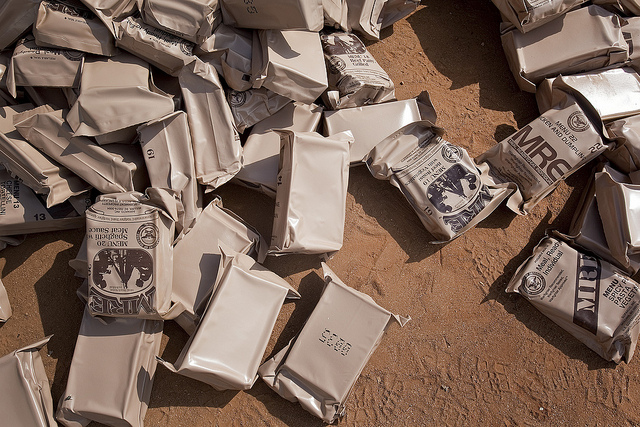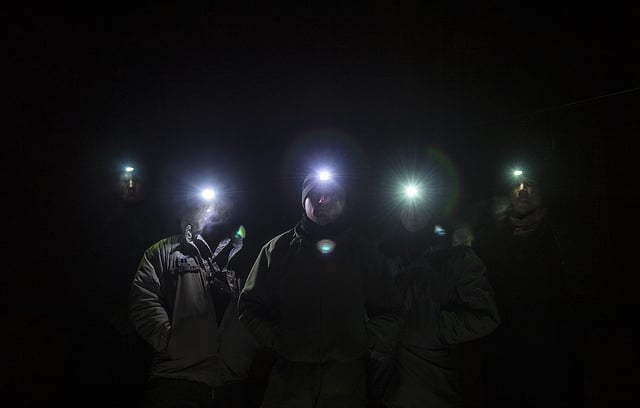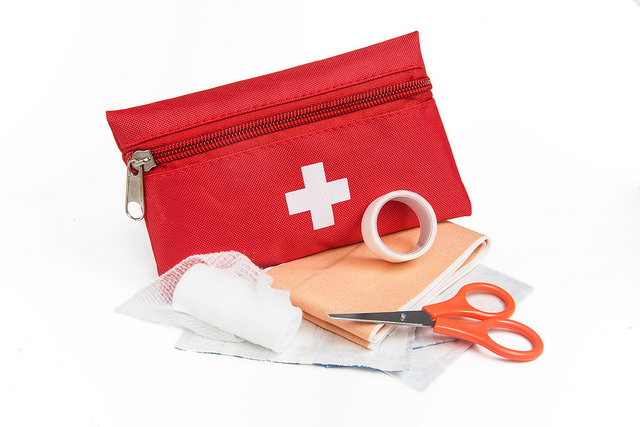
How to Survive a Power Outage: A Common Man’s Guide
“Great. The Power Is Out…. Now What Do I Do?!”
…fears of fatal vulnerabilities in major government systems and national power grids leading to a more widespread malicious attack have people preparing for the worst case scenario.
We’ve all been there: you wander into the kitchen in the middle of the night for a glass of water, only to find the light switch doesn’t work. You glance over at the microwave to see what time it is, and it too is dark. You instinctively check the weather app on your smartphone only to see your wi-fi isn’t working either….
A quick peek out the window only reveals more darkness, and you finally submit to the reality that the power must be out. You wonder out loud, “Great, how long is it going to last this time?” It usually only takes about an hour or so before the utility company is able to get power restored, but…
What if the power outage lasts much longer than you ever expected?
Power outages can stem from a variety of causes like transformers blowing, fallen trees, ice storms, hurricanes, tornadoes and many other naturally occurring events.
But with recent upticks in reports of cyber-terrorism and computer hacking across the globe, fears of fatal vulnerabilities in major government systems and national power grids leading to a more widespread malicious attack have people preparing for the worst case scenario.
Physical acts of terrorism are heinous to say the least, but now we have an invisible, yet potentially equally damaging cyber threat to be mindful of as well.
A recent report by USA Today suggested that as often as once every four days, a power grid in the United States is attacked either digitally or physically.
One such instance on April 16, 2013 involved a team of snipers firing on a substation in northern California, knocking out power in surrounding areas. After further investigation, it was discovered that the attackers also cut vital (and very expensive) fiber optic cables that were used for communications.
Although this small scale attack was able to be quickly overcome by routing power from stations nearby, it is an alarming reminder that our power stations are more vulnerable than we would like to think.
Much like other developed countries’ power supply, the United States’ system is made up of smaller systems throughout the country. This makes it difficult for attackers to bring the system down in “one fell swoop” unless it is a large-scale coordinated attack, but it does mean that the individual systems that power your area could be vulnerable regardless. (See how the grid works on YouTube)
With so many targets for terrorists to choose from, it isn’t wise for us to assume that our region will never fall victim.
So a question for you. What are you doing to prepare?
Do you know how to survive a power outage?
Regardless of how we lose power, we should all be adequately prepared to survive through a sustained power outage. But sadly, most of us aren’t.
It’s time to change this.
The following list of emergency essentials is a great beginning point on how to survive during a local power outage or even a national emergency, whether it be for 2 hours, or 2 weeks.
Sometimes “bugging out” isn’t the most necessary or best option you have in a time of crisis.
This list will have you prepared to hunker down, or “bug in,” and survive from home while you wait out the storm and develop a contingency plan. A key benefit to bugging in versus out is, weight and space are not nearly as much of a concern.
Since you’ll be in your home, you’ll be able to gather more materials than a basic bug out bag would call for.
For your convenience, we’ve broken down our list of recommended necessities like water, food, power and clothing into separate sections as follows:
Water

It’s the most basic human need, and you can’t really go more than 3 days without it.
For a majority of us who have become domesticated, it is so easy to forget about our dependency on water, but when a power outage happens, we very quickly realize the importance having an emergency water supply on-hand.
In a major outage, the reality is many of the water purification systems that your city depends on are not able to function without electricity.
This means that tap water isn’t safe to consume without first purifying it yourself by boiling it, or running it through a home purification system. With that said, it’s important to understand how much potable or drinkable water you should have access to.
The average human body needs at least two quarts of water a day to function properly.
In correlation with this fact, it is suggested that a proper water supply for a power outage should allow for a gallon of water for each member of your household for at least two weeks. This will give you enough water to figure out a more sustainable clean water source, and to ensure that you don’t dehydrate while you hope and pray the power is restored sooner than later.
Food

It’s true, the average human body can also last up to three weeks without food, but our bodies rely on a constant supply of nutrients to keep all systems operating functionally and our brains working at full capacity.
Unless you have a backup generator, during any stretch of time without power, the refrigerator is usually off limits. Only open the door when you absolutely need something from it, and even then you only have a few hours until meats, dairy, and other perishables need to be thrown out. So again, unless you have a backup source of power, you’ll need a healthy stock of non-perishable food items to last you the duration of the power outage.
Non-perishables:
- Canned Goods:
- Fruits, Meats, and Vegetables.
- Energy Sources:
- Trail Bars, Peanut Butter, and trail mixes
Just like your water supply, you’re going to need enough for your each member of your household for at least two weeks. This sounds simple, but you really need to think about how long two weeks really is.
Don’t underestimate this – it could be the difference between hunger and comfort as you wait for the refrigerator to start humming again.
While canned goods and energy sources are a must, another source of sustenance that can be purchased are MREs, or Meals Ready-to-Eat. MREs are generally used by the military for non-perishable sources of food.
MREs offer a little more variety and easy storage due to their small size. Check your local military surplus store, sporting goods shop, or if all else fails, Wal-Mart for MREs. Remember, when the power goes out, you need to think sustenance, not a four-course meal.
Light and Power

Power outages remind us just how dark it can get at night, and if it’s winter, just how brutal the cold can be.
About 8 years ago, major ice storms blanketed parts of the United States with heavy sheets of ice that knocked power out for weeks. As families gathered together in the few houses that had power, we were reminded of how essential it is to have an emergency supply of light and power as well.
When an outage occurs, it’s important to have an emergency light source stored in a safe place that you can easily recall and access. You need enough flashlights for at least two people, and extra batteries to facilitate these flashlights. LED headlamps should also be highly considered because of their efficiency and practicality when you need your hands to do something else.
For areas where everyone in your house will be congregating the majority of the time, large lanterns can be used. Many lanterns are now battery powered, which is an upgrade from the oil lamps of old. Oil lamps pose a fire hazard; especially around pets and young children. If left unattended, you could face an even bigger mess on your hands.
Did we mention extra batteries?
Extra batteries, or rechargeables, will make or break how much light you’ll have for the long haul as you wait for the lights to come back on.
Now, you may be asking, “but if the power’s out, how will we be able to recharge the batteries?” If you’re serious about surviving in a power outage, you should consider purchasing a portable generator. Fueled by unleaded gasoline or diesel, these generators allow you to charge devices, use power tools, or any other electrically powered device that is requisite during a power outage.
An ideal portable generator will provide 3,250 to 10,000 watts of power, and will use standard unleaded fuel. If used wisely, a generator can be an intrinsic piece of a power outage survival plan. But there is one consideration that should be made when thinking about long-term generator use:
Fuel – You’re not going to get far without it. In times of chaos and uncertainty, we’ve seen how fuel quickly becomes a commodity. You need to be prepared to keep your generator on, and to move if the power doesn’t come back on, and it’s time for a new plan. If you do have to end up leaving your residence, you’re going to need at least an extra tank of gas for your vehicle, and a bug out bag (obviously!) Hopefully you won’t have to bug out, and you’ll only have to use your spare fuel that you specifically stored for the generator.
First-Aid

You’ll never know when someone could get injured during trying times like a prolonged power outage, so it’s imperative that you have a First-Aid Kit on-hand. Your kit, according to the American Red Cross, should contain the following:
- 2 absorbent compress dressings (5 x 9 inches)
- 25 adhesive bandages (assorted sizes)
- 1 adhesive cloth tape (10 yards x 1 inch)
- 5 antibiotic ointment packets (approximately 1 gram)
- 5 antiseptic wipe packets
- 2 packets of aspirin (81 mg each)
- 1 blanket (space blanket)
- 1 breathing barrier (with one-way valve)
- 1 instant cold compress
- 2 pair of nonlatex gloves (size: large)
- 2 hydrocortisone ointment packets (approximately 1 gram each)
- Scissors
- 1 roller bandage (3 inches wide)
- 1 roller bandage (4 inches wide)
- 5 sterile gauze pads (3 x 3 inches)
- 5 sterile gauze pads (4 x 4 inches)
- Oral thermometer (non-mercury/non-glass)
- 2 triangular bandages
- Tweezers
It is also suggested that if anyone in your family has a special ailment that requires specific medication or care, you keep extra supply of the needed medication in your First-Aid Kit. If you are looking for a “done-for-you” option, you can find great pre-made survival First-Aid kits* online similar to the ones we recommend for your bug out bag.
*Just remember to supplement them with medications and supplies specific to your and your family’s needs.
Seasonal Specific Clothing
Like any disaster, power outages can happen at any time, and during any season, so it’s important to have clothing prepared to face whatever the elements might be. An outage in extreme heat means that you’re going to need moisture/sweat-wicking clothing that is also fast-drying. A winter-time outage means that it may be time to layer up and put your cap and gloves on to conserve energy and heat.
Insulated clothing, wool socks (not cotton!), and boots built for snowy conditions are a must-have in case you have to get out in a dangerous winter wonderland. The clothing that you’ve set aside for an emergency such as an outage should be just that – set aside. No one wants to dig through dressers, clothes hampers, or closets when time is of the essence. The name of the game here is emergency preparedness.
It’s true, power outages happen all of the time all across the world. Thankfully, in the more developed countries we all probably live in, power companies respond with relative speed. Sophisticated power grids have provided us with a security that we tend to take for granted.
Best case scenario, the lights go out for five minutes. Worst case scenario, they go out for weeks. This saying might get old, but there’s a reason you hear us say it – a lot…
Disasters of any kind, whether man-made or of natural occurrence, happen when we least expect it. Do yourself and your loved ones a favor. Learn how to survive a power outage. Prepare for the worst. Hope for the best.
What plans do you have in place for an emergency power outage? Do you have some or most of the supplies outlined above… just in case? Tell us in the comments below!
Categorized in: Background, Bug Out Bag Essentials, Bug Out Bags, Emergency Preparedness






Excellent read. After reading your article, I purchased LED headlights for my family and I. Thank you.
[…] How to Survive a Power Outage: A Common Man’s Guide […]
what about pets, I have four large dogs which I would not abandon I know their food requirements but not sure how much water they need
Great question, Joe. I don’t have pets myself, so I’ll be honest… I googled it. 😉 If anyone knows any different, please feel free to chime in! “The larger the dog, the more water they need. For a good rule of thumb, a normal dog will require 50-60 ml of water per kilogram of bodyweight. This means that a 50 lb. dog would need around 40 ounces of water, about 5 cups, each day.” source – petnet.io/blog/how-much-water-does-a-dog-need
Something that many people forget (and did forget during hurricane Sandy) is that you should fuel up every vehicle you own (if you own any) as they are perfect fuel storage containers. I had 24 gallons of gas in cans for my generator but had an additional 105 gallons stored in my 5 vehicles. My neighbor ran out of his 5 gallons quickly and was puzzled on where to get more. I pointed to his 2 SUVs that had 60 gallons in them. He felt like an idiot but I told him that I had to share this trick with everyone on the block.
One neighbor actually drove 250 miles round trip to get 10 gallons of gas in cans. He used more than 10 gallons in his SUV to get the 10 gallons. Sometimes we don’t see the simple solutions right in front of us.
Great points, John!
I decided to go with two generators – two small ones, rather than one large one. The first is a 1500 watt 25 year old Honda I got used. Works great. Second is a new one – 2200 watts but also an inverter. So, this one is safe for electronics. And so many new appliances these days have more and more electronics in them. In addition, by having two smaller generators, if one fails, I still have the second one.
As for fuel, I keep four 20 litre tanks in a shed. All the fuel is stabilized and I cycle through the tanks to make sure it’s always fresh. I run the tractor and lawn equipment with it, and also, if a tank has been sitting for a while, I will just empty it into the truck.
Sounds like you have a nice contingency plan in case one generator were to give up the ghost in the midst of an emergency. Thanks for sharing, Michael!
Very helpful site
Thanks John. Glad to know you’re getting some useful info. I guess we’ll keep writing!
[…] an emergency during a lengthy power outage, consume the perishables first. Cook up meat before it goes bad and eat up the veggies in the […]
We survived Super Storm Sandy and here is what we did when the lights went out for 2 weeks. First, LiPA turn tailed and ran and were no where is site. They abandoned Long Island so we were not alone without power. Out of state workers restored us.
First, we have a stockpile of batteries. They have a 5 year shelf life if un-opened. So we had plenty of power for our flashlights and a portable radio. We turned our cell phones off to conserve on their batteries.
Water was not an issue. Our town’s water district has it’s own self-sustaining pumps so we never lost water pressure.
The local supermarket had it’s own generator so we were able to get ice when they had it. We would load up the fridge with as many bags as we could jam in. To prevent losing the cold, we limited opening the fridge to once a day for only a few minutes to take out the next day’s meals by planning ahead.
For the things you use routinely like milk, soda, butter,, etc, we put them into a cooler with ice so not to lose the cold in the fridge.
When the ice ran out, mother nature was kind to us by lowering the temps to the 30’s. We took advantage of that by putting things on the porch out of the sun. We got a few extra days that way.
For the frozen stuff we eventually wound up cooking it to give us a few extra days. Worked out great.
We always pick up extra canned food when it is on sale and some goes to the pantry and some goes to preps. We’ve done that for years. The only thing we didn’t stockpile was canned tomatoes and sauce because the acid in the tomatoes eventually attacks the metal of the can.
We also had a good supply of lentils and rice. Cold cereal is not bad dry either and can stave off the munchies.
For heat we have a gas stove, so we used the oven. Of course we kept a few windows cracked to let in fresh air and limited the heating to a few hours a day.
We have a generator but didn’t fire it up. Gasoline was in short supply, what gas was available the station by us sold it exclusively to landscapers. At other stations fights, stabbings and a few shootings were reported over a few gallons of gas. So why risk our lives for that?
For keeping ourselves busy, there was always the routine chores that never go away and we often went out for a walk to see the damage and thank the out of town utility workers for showing up when LiPA turn tailed and ran away.
Excellent tips! I think an important thing is not to underestimate how boring the days can be without power. If you suddenly lose access to the Internet, it can be really jarring at first. Helps to make sure there’s plenty of reading material around! Maybe some educational survival books?